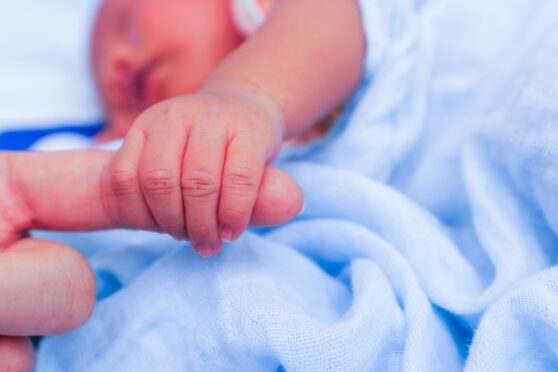
One in five pregnancy and childbirth specialists who qualified in 2013 is no longer working in that field in the UK, figures reveal.
In Scotland, while the number of those who qualified is small, a quarter are no longer working in the specialism here.
The exit of obstetricians and gynaecologists is revealed in a General Medical Council (GMC) report, The State Of Medical Education And Practice In The UK.
It shows that across the UK, 20% of the 2013 qualifiers are no longer employed in obstetrics and gynaecology. In Scotland, 15 doctors gained a certificate of completion of training in 2013 but by 2021 only 11 – a fall of 27% – remained.
The figures came after the Scottish Government ordered an investigation into a rise in baby deaths. Healthcare Improvement Scotland has been commissioned to lead a review following higher than expected neonatal death rates in September 2021 and March 2022.
Conditions and workloads for doctors who are specialists in caring for mothers in pregnancy and women with gynaecological problems are increasingly stressful, according to the British Medical Association (BMA).
Dr Iain Kennedy, BMA Scotland chairman, said: “Doctors in this speciality have highlighted that increasing medical complexity such as comorbidities (mothers with health problems), advancing maternal age, ever-increasing rates of obesity, diabetes, and rising Caesarean section and induction of labour rates are all combining to make the job extremely challenging.
“Senior doctors are often increasingly present and on site for out-of-hours work rather than on call – given the complexity of cases they are dealing with.
“This comes at a time when buildings and facilities are no longer fit for purpose, they are suffering from a lack of resources and staff shortages at every level, and a lack of capacity for elective Caesareans. These challenges are leading to exhaustion and burnout at all grades and levels of staff, and also within midwifery. This also means increasing rota gaps as people drop out of training, cut down the amounts they are working to try to cope, or leave the NHS altogether. Those left in the service are extremely worried.”
Concerns have also been expressed by the Royal College of Obstetricians and Gynaecologists. President Dr Ranee Thakar said: “Data suggests a higher proportion of our doctors leave the UK within five years of gaining their certificate of completion of training when compared to other specialities. We are working to understand why.
“We know that across the NHS, including in obstetrics and gynaecology (O&G), there is a huge amount of pressure on the workforce, alongside staff shortages.
“Staff recruitment and retention is crucial to reducing gynaecology waiting lists and delivering safe obstetric care.
“We continue to call on governments to commit to a fully-funded, long-term workforce plan to ensure there are adequate staffing levels.”
Campaigning group Doctors For The NHS warns that many doctors are suffering unbearable stress and are leaving for the sake of their wellbeing. It said: “What these figures show, with devastating clarity, is that many doctors are leaving to preserve their health.
“Current government regimes continue to undervalue the inhumane pressures health staff are under at our peril. How many lives must continue to be put at risk? Obstetrics and gynaecology have long suffered under-resourcing, more than most. What worse legacy could any government choose to leave than to abandon the best chances future generations might have, and leave so many mothers at risk?”
The leading doctors’ organisations views are backed in evidence contained in a previous GMC report on how poor working environments have been driving doctors away. It said: “Burnout, stress, lack of flexible working arrangements and poor organisational and team cultures were cited repeatedly by doctors across all groups as reasons for leaving the profession.”
The report went on to warn those issues needed to be urgently addressed to retain the doctors needed to treat patients.
Last November, The Sunday Post revealed concerns that premature babies were being put at risk by poor staffing levels in neonatal baby units. The British Association of Perinatal Medicine, the UK’s foremost group working in newborn care, warned that nationally agreed staffing levels were not being met. Meanwhile, mothers in the UK were three times more likely to die around the time of pregnancy compared with those in Norway, according to research revealed in the British Medical Journal. The study, published last November, highlighted blood clots as a leading cause of death, and a greater risk of death for pregnant women of ethnic origin. Other concerns included cardiovascular heart problems.
Campaigning group Action On Pre-eclampsia is lobbying the Scottish Government to introduce a test for a blood pressure-related pregnancy complication to allow obstetricians to intervene earlier . The Placental Growth Factor test is available in other parts of the UK and in many other countries.
Pre-eclampsia affects at least 20% of pregnancies and can escalate into maternal organ failure and babies being delivered prematurely to allow doctors to work on saving their mother’s lives.
The Scottish Government said: “Staffing across NHS Scotland has increased for 10 consecutive years and our medical and dental staff remain the best paid in the UK having received a 4.5% raise in 2022/23. NHS Scotland has filled 93% of medical training posts, including 100% of O&G positions.
“We are constantly looking at ways to enhance staffing levels and support workforce wellbeing, including providing more than £1 billion targeted investment for recovery and renewal and have funded record numbers of training places in medicine, nursing and midwifery, building on our record on maintaining staff numbers.”

Enjoy the convenience of having The Sunday Post delivered as a digital ePaper straight to your smartphone, tablet or computer.
Subscribe for only £5.49 a month and enjoy all the benefits of the printed paper as a digital replica.
Subscribe